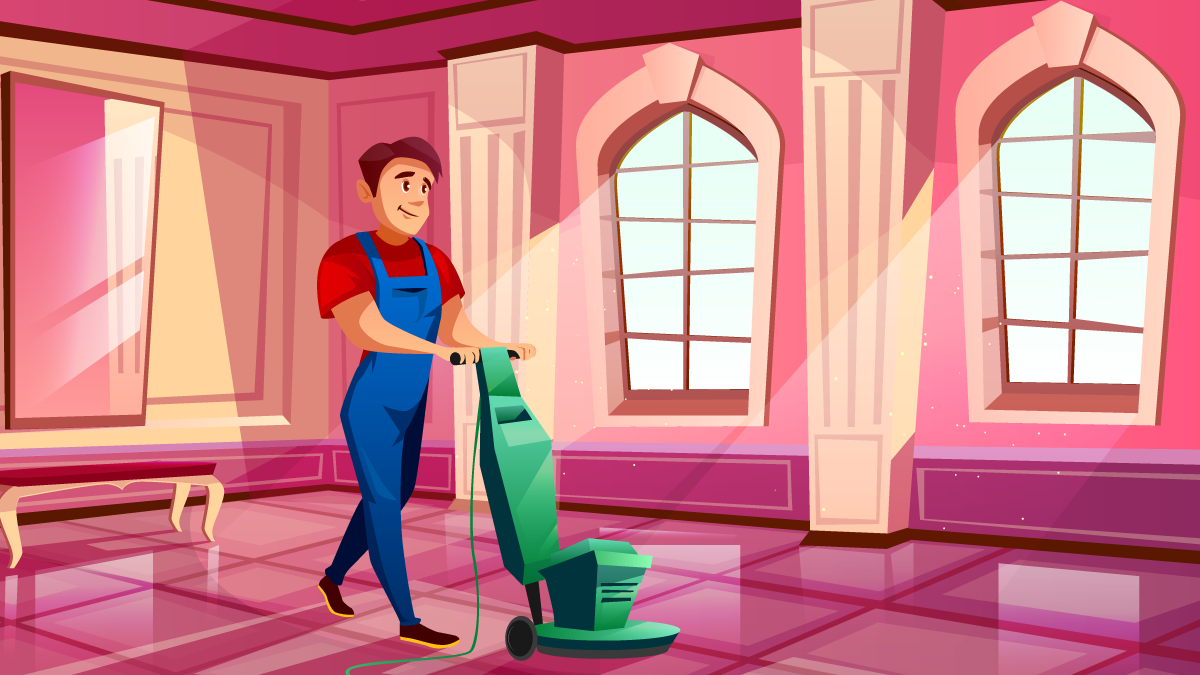
A safe home is a necessity in our life. It is the most sacred zone where we can be ourselves. In short, our home is our place of laxity. This is why taking care of the place where you live is not a want but a need. It feels great when you see a part of your home is shining again like it used to, especially floor tiles.
You can revive your floor tiles to give a new look to the specific part of your home, and painting your floor tiles will make them look as good as new ones when your tiles installation fix on the floor smoothly. If you are wondering how to paint floor tiles, you will not have to wait for long. In this article, we are about to explain “How to paint floor tiles following easy steps.”
How to paint floor tiles easily
Many of us may not have the idea of how to paint floor tiles. Different floor tiles require different types of paints. Following these easy steps, you may achieve a clean floor that will look good as a new one. It can be your bathroom floor tile or kitchen floor tile. It can also be home depot porcelain tile, ceramic floor tiles.
We will provide you with the easiest ways to paint it, which much cheaper and time-saving than a new floor tile installation. But, before jumping into the primary job, let’s have a look into the apparatus you need to paint your floor tiles.
Necessary tools
- Primer (must be suitable for all surface): Primers are used for coating any surface, and it also makes a character prepared or painting.
- Patio Paint: Patio paints are best for painting on smooth surfaces like tiles.
- Roller and paintbrush: For painting your floors, you will need a roller, but brushes are helpful to reach the grout lines.
- Stencil Paintbrush: Small rolling brush best for stencil designs on walls and floor.
- Stencil: Stencils are an optional choice. If you want to make patterns and designs, then the stencil is what you need.
- Painting tape: Painting tape helps to avoid color reaching in unwanted places.
Step-1: Clean up the floor
Before you start your process of coloring, it is necessary to clean up the floor. You can use cleaning agents with water to make a solution and clean up the floor to make sure there is no residue or dust. If something remains on the floor like dust or residue, then it may cause your paints to form bubbles, and colors may come out.
Rub and scrub your floor and make it as shiny as you can and let it dry for an hour to start your painting work on the floor tiles.
Step-2: Apply primer
After cleaning the floor, now it’s time to apply the primer. It is enough to put one primer coating but to make it last longer, and you can apply another layer. You can use the paintbrush to apply primer on the grout line properly. And then use a rolling paintbrush to paint all over. Make sure you apply your primer correctly to fill up all the gaps and make a smooth surface.
Once you are done with your first coating, you can now plan to do the coating again to have two layers of coating. Ensure the first coating dried well, and then the floor tile is ready for the second coat.
The primer takes half a day to dry up, and it will completely change the previous color and turn your floor white in color. And once the first layer of primer drys, you can go for the second layer and wait another half day.
Step-3: Base color
After the primer coating is completely dry, now it’s time for the base color. Again, you can choose colors to match your walls and ceiling to make it look better. For example, you can recolor the wall and ceiling to match your floor color or get the patio paint color matching your wall and floor.
Try to look for better color quality that will last long and sustain moisture and traffic. Use the painting tape so that colors do not reach unwanted places. Outdoor patio paints from a good brand will be durable, and you can always take the expert’s help.
You can use the same techniques as the way you applied primer. Use the paintbrush and roller to color your floor tiles fully. If you want, you can put on a double coat, but that may take longer. Patio color will take a whole day to dry out. That means 24 hours, and a double coating will take two days.
This is not the end of your floor tile painting session. If you have completed all the steps, you will get a shiny floor, looking like a DIY replacement because the finishing touch is still left.
Step-4: Stencil
The final touch is the part where you will need the stencil. After the color dried, now your floor tiles are ready to get some pattern design. You can get the stencil of your choice that you would love to have on your floor. Make sure the stencils are thick enough so that you can put as many color coating you want. The thinner stencil will tear off after you put color over it for few times.
Putting stencil on the floor and paint though it sounds easy. In reality, it is not as easy as you think it is. First, you have to use your stencil paintbrush, which is appropriate for stencils. Stencils may come off from the floor if you don’t attach them with tape. And make sure you go over the stencil repeatedly so that the color settles appropriately and evenly.
There are places where one whole part of the stencil may not fit. Hence you have to resize or fold the stencil to fit the size of that specific place.
Stencil painting over your tiles is the final step, and it will make your tile look like a single whole piece. The grout line can be covered singularly and separately after finishing everything. But it is not mandatory.
When you are done with coloring the floor tiles with a stencil, now it’s time to let it dry, and then you have a whole new floor at your place.
Final words
We all like to stay in a clean and good-looking environment. So it feels great when we get something new at home. But when the wall painting or floor tiles wear off, replacing it can be expensive and may take a lot of effort and time. Hence recoloring is the best option. So to save your money and time, we suggest painting your floor tiles because you can do it yourself.
Following these four steps, you can paint your floor tiles with ease. Ensure that safety is your first concern and give proper time so that primers and the paints can dry well.




